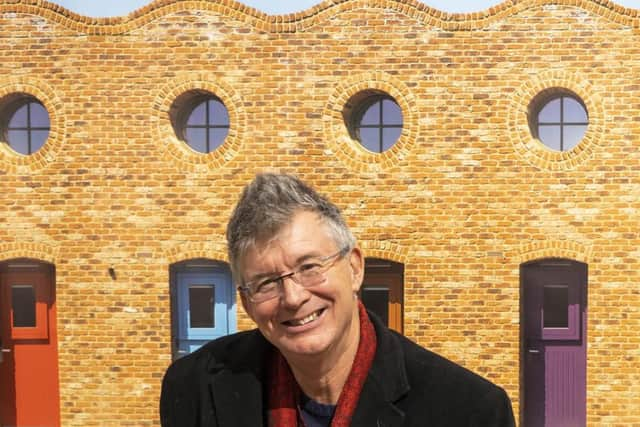Leading architect Peter Barber: Homelessness is being driven by housing crisis - but we have the power to stop it
The housing crisis is one of the most fundamental difficulties Britain faces as the decade draws to a close. According to official statistics, from January to March 2019 70,430 households in the UK were either assessed as homeless or threatened with homelessness. The Government has a goal to build 300,000 houses a year, but the 10-year average stands at 177,000, meaning there is a huge shortfall to cover.
It is against this backdrop that acclaimed architect Peter Barber has devoted his career to designing modern social housing that pushes aesthetic boundaries while providing places to live that revive the idea of communities based around streets.
Advertisement
Hide AdAdvertisement
Hide AdBarber, who turns 60 next year, was born in Guildford and today runs a studio in King’s Cross. He is the subject of an exhibition at Sheffield Hallam University’s Institute of Arts featuring photographs, models, drawings and sketchbooks.


“This is a bit of a homecoming for me because I did my degree at Sheffield,” he says, giving a talk to students. “It’s almost unrecognisable, actually, but it’s lovely to be back and lovely to think of the work coming back, in the exhibition.”
Barber, who learned his craft at the University of Sheffield rather than Hallam, has been described as one of the country’s leading urbanists – those who closely follow how people living in towns and cities interact with their built environment.
His schemes range from the Donnybrook Quarter in Hackney, a distinctive low-rise complex with a whitewashed, Mediterranean appearance, to Holmes Road Studios, a development of cottages for homeless people in Kentish Town, set around a communal garden and inspired by the tradition of almshouses for the poor.
Advertisement
Hide AdAdvertisement
Hide AdHe says the scale of homelessness is down to the commodification of housing and “a series of quite disastrous policies from Governments of both complexions”. He puts forward three solutions that would halt the housing crisis ‘almost immediately’.
“We need to end the Right To Buy which has resulted in the loss of two million social homes over the last 50 years, we need to build 150,000 or so social homes a year, and we need to introduce private sector rent controls. If those things happened, the housing market would be dead. Housing as a commodity, as an investment vehicle for pension funds and even for individuals - buy to let - would be over as a thing. Housing as a basic requirement, a need for people, would be the principal focus.”
The power to force change is in everyone’s hands, he stresses. “We blame Government but we actually live in a democracy, we all share responsibility in this. We have the ballot box, a free-ish press, and direct action. It’s our choice about what sort of society we live in.”
Barber’s survival as an architect relies on his ability to arrive at fresh concepts. “Part of keeping ideas alive is to have a sketchbook and to be able to think ‘What if?’”
Advertisement
Hide AdAdvertisement
Hide AdTo that end, he has proposed the 100 Mile City, a ring of houses, workplaces and other facilities snaking around the circumference of London, all linked by a high-speed orbital monorail inspired by a real-life system in Wuppertal, Germany. He accepts his dream may never become a reality, but argues it has sound principles. “If we need all these millions of houses in London, where do they go?
“Are we going to carry on flattening social housing and well-established areas or find somewhere less disruptive? We came up with the idea that the edge of London, where it meets the Green Belt - the last 100 metres or so of suburbia - might be a place, and as well as houses there’d be factories and schools.”
Peter Barber: 100 Mile City and Other Stories is at Sheffield Institute of Arts, Fitzalan Square until December 20.